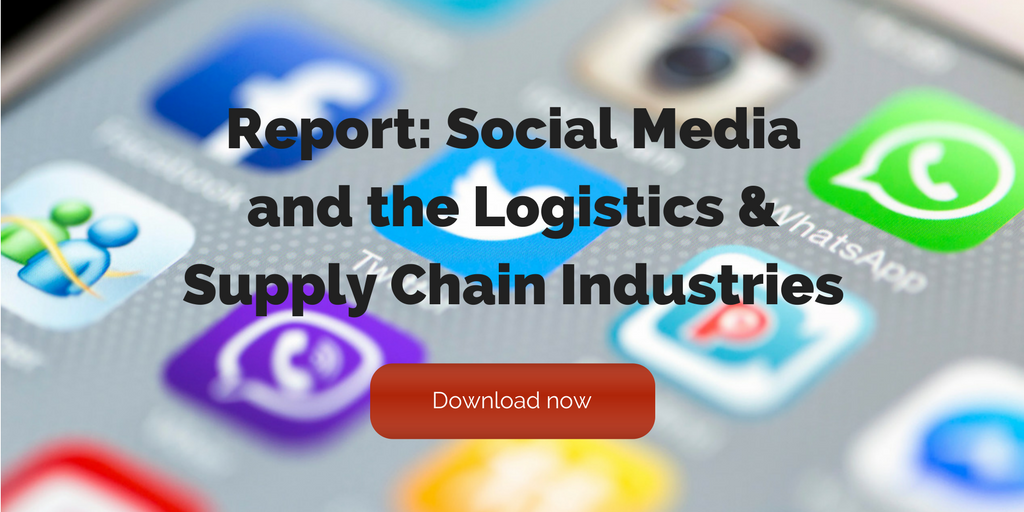
by Fronetics | Aug 2, 2016 | Blog, Content Marketing, Marketing, Strategy

Content marketing can help with lead generation and nurturing, but your business still needs a solid sales staff to close deals.
Content marketing helps generate a steady influx of quality leads and provides relevant information to prospects as they move down the sales funnel. Content can even help close a deal.
But forget any notion about content marketing replacing the work of your sales staff. The two must work together to convert leads into customers.
Even quality leads do not typically turn into sales on their own. You need a sales staff to take those opportunities and cultivate them into new business.
What content marketing does vs. your sales staff
Content marketing and sales staff provide different touch points for leads at distinct stages of the buying cycle. Here are a few examples:
Forming a relationship
- Content marketing opens up dialogue with potential customers. Often the first signs of customers’ interest appear after they read one of your blog posts, when they open and click through an email, or they share your company’s posts on social media channels.
- Your sales staff keeps that positive contact going to the next level. They develop it into a conversation. That person who read your blog post now has a relationship with a person in your company.
Providing information
- Content marketing can reach a potential customer early, while they are looking for solutions. B2B buyers report spending more time conducting research, using more expert content such as vendor websites, user reviews, and social media, before making a purchase. Your business should be producing content in order to make the short list of buyers who are looking for products and services like yours.
- Your sales staff answers those important first questions. When a customer reaches out with a query, s/he is likely 60% through the sales process. The customer has done a fair amount of research, and the sales rep must speak specifically to the customer’s needs — in a way that generic content can’t — to keep them interested and moving down the funnel.
Advocating for your brand
- Content marketing increases brand awareness for your business. It helps elevate your brand position within the industry and keeps your business top of mind, even when potential customers aren’t ready to make a purchase.
- Your sales staff is the advocate for your brand when a customer is preparing to make a purchase. They should be proactive in pursuing business when customers show interest in your content or when they reach out with questions. They drive dialogue and get to know customers and how your business can help them.
The content marketing, sales staff partnership
Curating and creating great content will generate quality leads for your company. But, your sales staff is vital to building relationships with potential customers and closing the sale.
Related posts:

by Fronetics | Jul 29, 2016 | Blog, Content Marketing, Marketing, Strategy, Supply Chain
Here I share some of our best performing content from the first half of this year.
Auditing your content and adjusting your strategy is an important part of an effective content marketing program. I like to do an in-depth look at how our content is performing every six months.
As I was evaluating our most popular articles in the first half of 2016, one of the things that struck me was how well they spoke to our content strategy. The top 10 blog posts reflect the topics that we know are most interesting and valuable to our readers. This reinforces the importance of 1) creating a strategy based on your target audience, 2) developing content around that strategy.
While the list itself is interesting, I think the articles are worth sharing again because of their quality and value. So, in case you missed them, here are our top blog posts from the first half of 2016.
Fronetics’ 10 most popular supply chain articles in 2016 (so far)
1) Four Supply Chain Companies that Excel at Social Media
These four organizations have it down when it comes to social media. Consistent posts inform and engage their followers. Who are they and what are they doing that is working? Read the full article.
2) Diversity and Leadership: An Interview with Arrow Electronics’ Kendrea Durr-Smith
Kendrea Durr-Smith runs a unique team as director of global trade compliance at Arrow Electronics. Her department works with people of all different cultures and backgrounds, while recent changes at Arrow with respect to trade management and compliance have given her team exciting, new responsibilities. Read the full article.
3) Top Logistics and Supply Chain Blogs of 2016
Companies in the supply chain and logistics industries are realizing the enormous benefits that a quality content marketing strategy, including regular posts to a company blog, can offer. These three companies, in particular, are publishing content that not only drives business to their websites, but also fuels conversation about industry best practices, trends, and issues. Read the full article.
4) Shipping company Eimskip Places a High Value on Culture and Art; It’s Paid Off
Iceland’s oldest shipping company regularly hosts local artists on voyages between its headquarters in Portland, ME, and Reykjavik. The practice reflects Eimskip’s great efforts to integrate itself into all aspects of the communities in which it operates. Read the full article.
5) 3 Key Tips for Creating Valuable and Compelling Content
This guest post by Jennifer Cortez, director or marketing communications at Transplace, discusses her company’s approach to content development. Read the full article.
6) Getting to First Base with a Social Network
Guest author Tania Seary is founder of Procurious, a global online network for supply chain and procurement professionals. In this article, she discusses some of the key decisions leadership made along the way to build the company from the ground up. Read the full article.
7) Social Media Facts for B2B Companies
Understanding how users are engaging with social media is important for businesses hoping to reach consumers with these tools; however, the information is hard to track down. Here are eight of the most recent, relevant statistics and facts about social media for B2B organizations. Read the full article.
8) Amazon Loves Logistics? The E-Commerce Giant’s Next $400B Opportunity
Amazon’s recent activity suggests it plans to move into the logistics space as a 3PL provider. This article examines why such speculation is valid and how it might disrupt the estimated $400 billion fulfillment market. Read the full article.
9) EBN’s Hailey McKeefry on Women in the Supply Chain Industry
This interview with EBN Editor in Chief Hailey McKeefry examines the gender gap in the supply chain industry in light of her own career path. McKeefry also offers advice to women considering entering the industry. Read the full article.
10) Women in Manufacturing and the Supply Chain: Disparity and Opportunity
A McKinsey & Company report found that diverse companies financially outperform companies that are not diverse by 15%. And in terms of gender diversity, specifically, research shows that when women are in positions of leadership, companies perform better — much better. How can the supply chain capitalize on that information and impact the bottom line? Read the full article.
Runner-up posts:


by Fronetics | Jul 28, 2016 | Blog, Diversity, Leadership, Logistics, Strategy, Supply Chain
In an interview with Kate Lee, Saunders discusses her career in the logistics industry and key issues within the supply chain.

Kelli Saunders is president of Morai Logistics.
The percentage of female CEOs in the Fortune 500 declined from 4.8% in 2015 to 4.2% in 2016. Canada, too, has realized a decline: 8% of the highest-paid executive positions are held by women, down from 8.5%. Research conducted by Gartner in April 2016 finds that for the supply chain industry, “the percentage of women in leadership positions decreases as the corporate ladder rises.”
It was a “fluke” that Kelli Saunders found the supply chain industry. More than 30 years later, Saunders is president of Morai Logistics Inc., an Authorized Agent of Mode Transportation. I sat down and talked with Saunders about her career and her perspective on women within the supply chain industry.
How did you find the supply chain industry?
It was a fluke. I was just out of college and needed a job. I found an ad in our local paper for a telemarketer, and I applied. I was hired as a telemarketing supervisor for a Canadian intermodal marketing company (IMC).
The man who owned the company focused on his employees. He taught us how to read a balance sheet and an income statement. He taught us the difference between added value and value added. And he taught us the industry. He had us climbing into trucks and railroad yards so that we could truly understand the industry.
When his wife sadly passed away, he decided to sell the company. He allowed six of us to become majority shareholders.
Fast forward sixteen years. The company has been bought and sold many times. I’ve stayed with the company through this process. Each time the company changed hands, my role changed, exposing me to different aspects of the business. Six years ago I bought the company back and now serve as president.
Your first boss sounds like he was a pretty incredible person.
He was. And now it is my turn. It’s my turn to give back.
I am a big believer in millennials. Their energy is contagious. I strive to be a mentor to them, and to let them know that they can dream big.
You’ve been in the industry for more than 30 years. What changes have you seen?
The industry is becoming more diverse, and more women are entering the industry. That being said, there is a still a long way to go. A big challenge is getting women and minorities to recognize that the supply chain industry is an option.
Tell me more about this.
Women don’t seem to recognize that there are incredible opportunities in the supply chain industry. The industry needs to do a better job at sharing what is happening — what the industry is all about. People think it is dull and boring; it’s not.
The supply chain industry is not just about getting things from point A to point B. The industry is an entire sophistication of infrastructure. There are so many aspects that we take for granted. Streamlining the chaos within the industry is incredibly rewarding.
How can this problem be addressed?
We need to get out and talk to more people. We need to go into the schools; we need to make connections and have conversations. Companies need to share their stories more widely. It is all about getting the word out there.
What advice do you have for people who do enter the industry?
Surround yourself with the best of the best. This is true when it comes to your colleagues, your employees, your vendors, your clients — everyone. This not only makes life more enjoyable, it has an impact on the bottom line.
Interestingly, 75% of the staff at Morai Logistics are women. This is not by design. By seeking out the best of the best, it just happened.
As a mentor, what advice do you give?
Dress for the job you want, not for the job you have. But I am not talking just about clothes. I am talking about your mental state, your body language, the quality of the work you produce. Visualize the job you want and portray that in all you do.
I also tell people to always be honest, respectful, and ethical. These characteristics are essential.
Getting the right product to the right place at just the right time is a complicated business. Kelli Saunders, CEO of Morai Logistics, understands the complexities and nuances involved in long term sustainability in the logistics industry. This is why the company she leads is the successful multimillion dollar, multinational business that it is today.
Kelli’s experience in the supply chain and logistics field is extensive. During her 30 years in the industry, she has been recognized for her strategic selling, relationship development, and management throughout North America. She started from her humble beginnings as a telemarketing supervisor for a Canadian 3PL provider to creating Morai Logistics Inc.
Since then Kelli has received numerous awards for her expertise in strategic sales. She has shown consistent impact in the industry by being awarded Salesperson of the Year numerous times, and was the former president of the Toronto Transportation Club. As a certified diversity supplier, her company has received WeConnect Canada’s Doing Business International Award and WBE Canada’s Doing Business Award as a woman-owned business.
Aside from assisting her clients with services including warehousing, management consulting and technology services through Morai Logistics, Kelli’s drive also shines through in her other passions.
She is an active member of the Women Presidents Organization, WeConnect International, and WBE Canada. Kelli strives to inspire women by telling her story and sharing her lessons at talks to support fellow female entrepreneurs. She also takes time to enjoy spinning, running, golf, and travelling. Her motivation and drive shows in her company’s performance and inspires her team to succeed.
Related posts:

by Fronetics | Jul 27, 2016 | Blog, Content Marketing, Marketing

Effective content marketers have these four things in common.
Think your content marketing could be better? You are not alone. Only 30% of content marketers feel they are effective, and, according to a recent survey, 55% of B2B marketers say they do not actually know what an effective or successful content marketing program looks like.
In fact, some of the key findings from the report, B2B Content Marketing 2016: Benchmarks, Budgets, and Trends – North America, may surprise you.
Recognizing success
First, the team must understand what they are striving for:
- Only 44% of B2B marketers say their organization is clear on what content marketing success or effectiveness looks like; 55% are uncertain. For success, everyone must understand what to look for.
- Only 32% of B2B marketers consider themselves sophisticated or mature in their skill-level. Sixty-four percent of those in the sophisticated/mature phase say they are effective at content marketing, while only 23% in the less-experienced adolescent phase express confidence. But, when strategies are documented, it appears to increase the confidence and success at every skill level.
What makes a team more effective at content marketing?
One key theme that emerged from the survey is that effective content marketers do these four things.
1) They know what effective content marketing looks like.
Effectiveness can be defined as meeting your overall goals and objectives — but in order to do so, those goals must be clear. B2B organizations that have a clear vision of content marketing success are more effective than those that do not. In fact, 79% of the most effective marketers report having that clarity, while 77% of the least effective say they lack it.
2) They have continuous communication.
The most effective B2B marketers (61%) meet daily or weekly with their content marketing team — either virtually or in person. Fifty-four percent say team meetings are valuable.
3) They document their content marketing strategy.
Documenting your content strategies can directly improve a marketer’s overall effectiveness. Fewer B2B marketers are doing this (32% in 2016 vs. 35% last year), even though research supports that a documented strategy can significantly improve results.
4) They document their editorial mission/long-term goals.
Research found that 48% of the most effective content marketers also have a documented editorial mission statement. This statement clearly defines who your audience is and why your content will be effective — it defines your brand. You should also document any long-term goals, like lead generation and sales, for example, will be the most important for most B2B content marketers over the next 12 months.
Having clear communication, documented goals, and defined strategies will provide direction, which can be the guiding light to effective content marketing. Implement these proven steps to better focus your team and to make effective content marketing clear and recognizable.
Related posts:

by Fronetics | Jul 26, 2016 | Blog, Content Marketing, Marketing, Social Media, Strategy

Your business should be on social media showing buyers that you know what they want and that your business can provide it.
Once again B2B buyers reported that their purchase cycle has increased since last year. That’s in part because they are scrutinizing potential vendors more closely than ever before. Buyers overwhelmingly reported spending more time conducting research (80%) and using more sources to investigate purchases (73%).
You may be surprised to learn that one of those sources is social media, more often than not. More than half (53%) of B2B buyers report turning to social media to make buying decisions. What’s more, more than a third (34%) say they are spending more time this year than last using social media to research vendors and solutions.
Social media should be a critical component of your lead generation and nurturing strategy. Your business should use these platforms to prove that you understand what buyers are expecting from your brand. The 2016 B2B Buyer’s Survey Report found that today’s B2B buyers expect:
- Timely responses to messaging: Demonstrating a timely response to questions helped make the sale 98% of the time.
- Strong knowledge of the company and its needs: Personalization ranked as the second most influential reason a buyer chooses a specific vendor. When researching potential products, 64% gravitated toward companies that demonstrated “a stronger knowledge of our company and its needs.” A whopping 84% chose a vendor that could solve one of their pain points.
- Clear demonstration of ROI: Buyers reported conducting a more detailed ROI analysis before making a purchase. Vendors who can demonstrate how customers will receive their return on investment have a clear advantage. In fact, 90% of businesses that do this make the sale, according to the study.
- Speedy and easy delivery: “Deployment time/ease of use” skyrocketed from 49% in 2015 to 83% this year, leading the ranks as one of the most important variables that can set you apart from your competition. Buyers not only want it quickly, but they want a simple and easy buying process.
Which social media platforms do B2B buyers use most in their research?
The B2B Buyer’s Survey found that buyers primarily are using three social tools to conduct their research.
- LinkedIn is reportedly the most impactful to the research process. (81% said it was very important or somewhat important.)
- Blogs came in second, with more than a third of buyers (37%) ranking it very important.
- Video sites like YouTube and Vimeo are third, with 60% of respondents ranking them very important or somewhat important.
Want your business to connect with the 2.3 billion worldwide social media users? Get Fronetics’ free social prospecting workbook to learn how to use these platforms to generate new leads and sales for your business.
Related posts:





